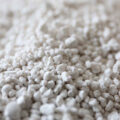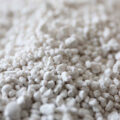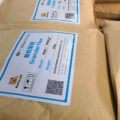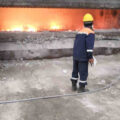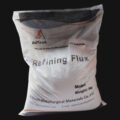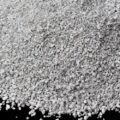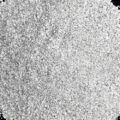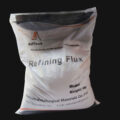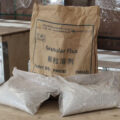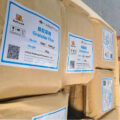In order to further determine the refining efficiency of the granular fused refining agent, an aluminum melting furnace with the same capacity was selected, and the aluminum alloy melt was prepared with electrolytic aluminum liquid and cast into a cast rod. The first furnace aluminum alloy melt is spray-refined with granular refining agent, and the second furnace aluminum alloy melt is spray-refined with traditional powder refining agent, and then the produced aluminum alloy cast rods are compared and analyzed.

The comparison test process is as follows:
1) Pour the electrolytic aluminum liquid into the aluminum smelting furnace, and prepare the alloy melt according to the requirements of aluminum alloy. The initial refining temperature is 740℃. Among them, the first heat uses a total of 14 kg (1 kg/t melt) of granular fusion refining agent plus N2 for spray refining; the second heat uses a total of 28 kg (2kg/t melt) of traditional powder refining Add N2 for spray refining.
2) The electric powder spraying refining tank with quantitative feeding is used to spray the refining agent to the aluminum alloy melt. The two charges are divided into two refining agents for refining. Each time the refining dose is half the total amount, and the refining time is 15 times each time.
In the test, six aspects including the amount of fumes from the melt during the refining process, the color of aluminum slag ash, the temperature change of the aluminum melt before and after refining, the change of alkali metal content before and after refining, the effect of impurity removal, and the aluminum burning loss of the two furnaces were tested in six aspects. The refining effect is compared and analyzed.
Take a sample 15 cm from the head of the aluminum alloy cast rod produced, place the two furnaces of aluminum slag from the smelting furnace separately, and then screen after cooling. The recyclable aluminum on the screen and the waste under the screen are used for the analysis of aluminum burning loss.
The aluminum alloy melt of the first furnace was refined with granular fused refining agent, and no obvious smoke was found from the beginning of the refining to the end of the refining and the slagging process. During the refining process, it does not emit light or burn, and the scum just removed is dark red, and gray-black after cooling, indicating that the aluminum alloy melt is less oxidized and burned.
The second furnace aluminum alloy melt is refined with traditional powder refining agents. On the one hand, smoke and dust are always generated during the refining, slagging and slag cooling processes. On the other hand, due to the high temperature, the aluminum melt undergoes a violent oxidation reaction and emits dazzling white light, and the aluminum slag after cooling is off-white, indicating that the aluminum melt has suffered severe oxidation burnout during the refining process.

